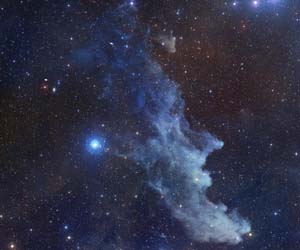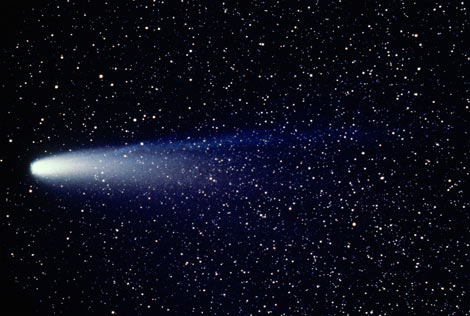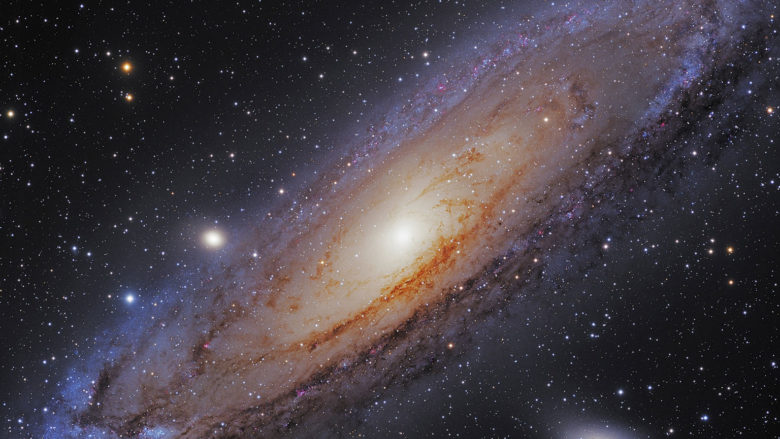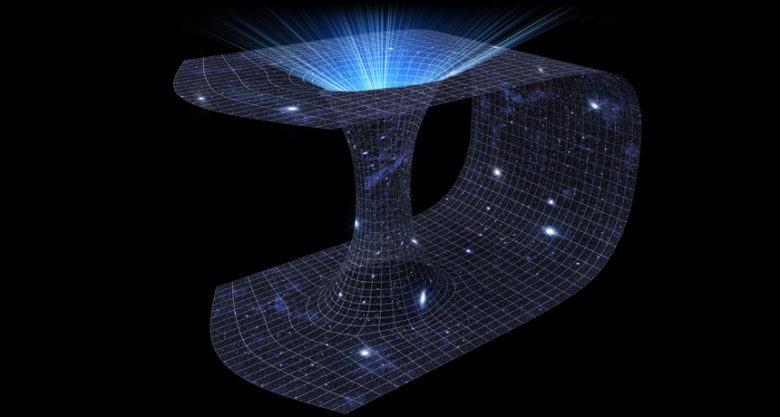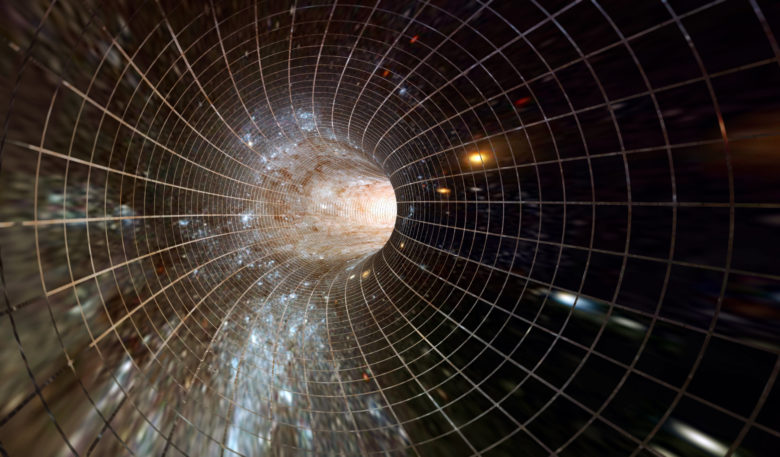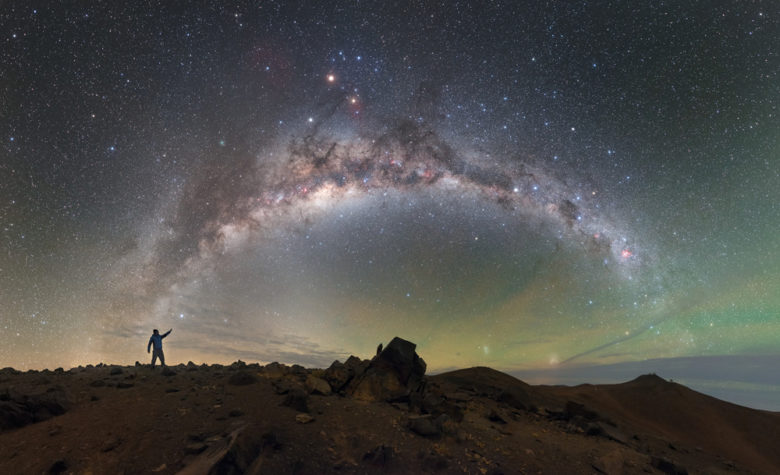Orion is the most-easily recognized constellation in the sky, which is no doubt due to its distinctive configuration, and the fact its constituent stars are very luminous. In fact, it includes two of the brightest stars in the entire sky, including Rigel, a magnificent bluish-white supergiant located 772.9 light years distant, and with an apparent …
The brightest star visible from any part of Earth is Sirius in the constellation Canis Major the Greater Dog. Sirius is sometimes called the Dog Star. Most people in the Northern Hemisphere notice Sirius in the southeast – south – or southwest on evenings from winter to mid-spring. February evenings are a grand time to …
Halley’s Comet, also known as 1P/Halley, is the most well known comet in the Solar System. As a periodic (or short-term comet) it has orbital period that is less than 200 years, and has therefore been observed more than once by people here on Earth over the centuries. It’s appearance in the skies above Earth …
ANDROMEDA GALAXY FACTS The Andromeda Galaxy (M31) is the closest large galaxy to the Milky Way and is one of a few galaxies that can be seen unaided from the Earth. In approximately 4.5 billion years the Andromeda Galaxy and the Milky Way are expected to collide and the result will be a giant elliptical …
A wormhole; a magical gateway that connects two points in space and time with one another. Just align the chevrons to dial in your destination, wait for the stargate to stabilize and then just walk… walk! to your destination half a galaxy away. Yeah, that would be really nice. Someone should really get around to …
Is it real, or is it fable? In H.G. Wells’ novel, The Time Machine, our protagonist jumped into a special chair with blinking lights, spun a few dials, and found himself catapulted several hundred thousand years into the future, where England has long disappeared and is now inhabited by strange creatures called the Morlocks and …
The Milky Way is the galaxy we live in, one of the countless collections of stars and dust throughout the universe. It’s a reality so basic, grade school kids learn it. But it wasn’t always so obvious. Just 100 years ago, the nature of the Milky Way — and the universe itself — was still …
